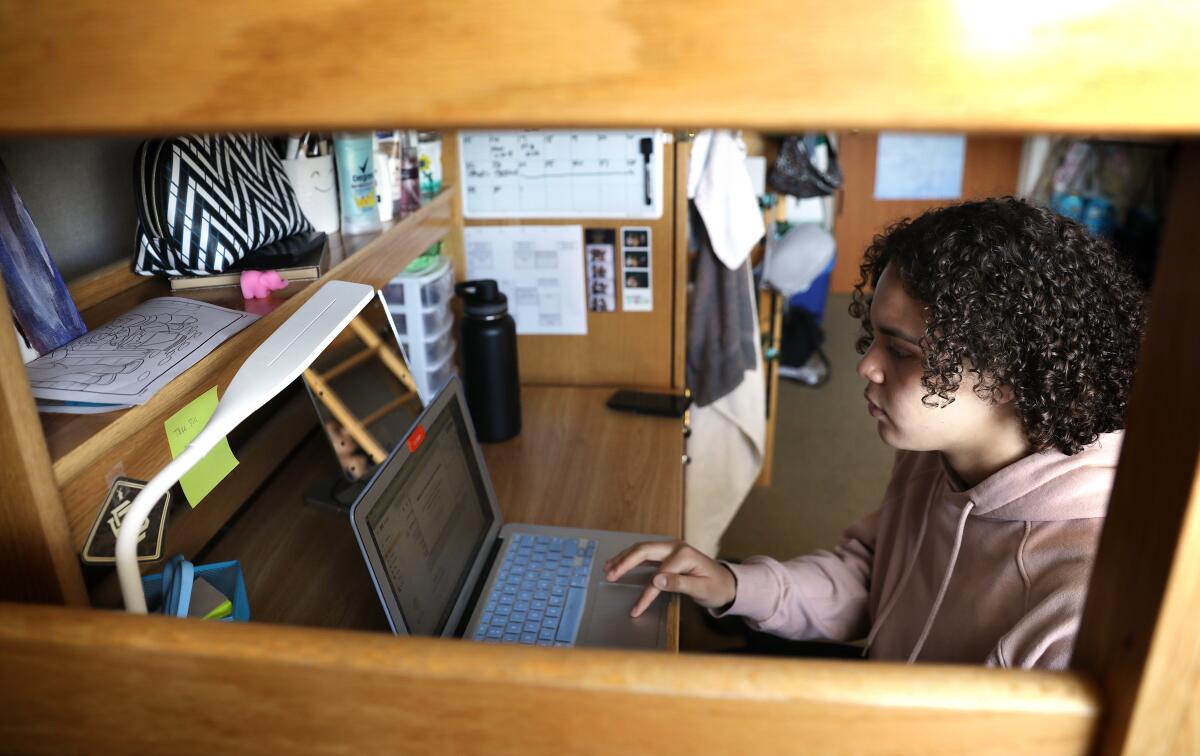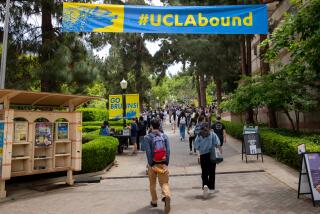UC could reopen just one-third of its dorm rooms this fall

The University of California could reopen just one-third to one-half of dorm rooms this fall in order to maintain safe distances among students amid the coronavirus outbreak, a top UC official said Monday, raising questions about what would happen to others without campus housing.
Campuses are still making decisions on their fall scenarios, which may come in June or July. Last week, UC President Janet Napolitano said campuses will first be required to satisfy systemwide guidelines to ensure public health and safety and any reopening “will probably be greatly reduced.”
Any reduced availability of dorms — and subsequent decline in housing revenue — would amplify the staggering financial toll on the UC system triggered by the coronavirus crisis.
The UC system was hit with $558 million in revenue losses and added expenses to its 10 campuses and five medical centers in March alone and those costs are projected to rise to about $2.5 billion by the end of the fiscal year that ends June 30, according to Nathan Brostrom, UC Merced interim chancellor, who also has served as systemwide chief financial officer.
He made the remarks about dorm reopenings during a broad-ranging online discussion on the effect of the COVID-19 pandemic on higher education sponsored by the UC Berkeley Center for Studies in Higher Education.
Brostrom said the “financial shock” of lost revenue from multiple sources, including dining and housing contracts, sporting events, study abroad programs and elective surgeries, would be a short-term crisis.
“These are one-time shocks,” Brostrom said during the webinar. “There still is incredibly strong demand for our medical centers, pent-up demand for treatments, our housing. We could fill every single bed tomorrow if we were to open.”
Unsure how the COVID-19 pandemic will play out this fall, students are reconsidering if, when and where they go to college.
Higher education officials across the nation are grappling with how to safely reopen campuses this fall, with many of them envisioning modified access to dorms, classrooms and dining facilities. Some small liberal arts campuses, such as Pomona and Claremont McKenna colleges, have secured leases to house additional students in nearby off-campus apartments.
But that option is more difficult for UC campuses, particularly those located in tight housing markets such as Santa Cruz and Berkeley. George Blumenthal, former UC Santa Cruz chancellor who now directs the UC Berkeley higher education center, said one possibility is to bring back limited groups of students, such as freshmen, for the all-important campus bonding experience and continue online learning for graduating seniors.
Students involved in UC’s vaunted research enterprise also would benefit from campus housing because it’s harder to do such work remotely, he said.
Blumenthal added that housing payments are used in part to pay off loans for construction of new buildings, so the loss of that revenue will affect UC’s ability to build badly needed residence halls. Housing projects are underway at several campuses, including Santa Cruz, Berkeley, Merced, UCLA and UC Riverside.
Merced, however, is on track to open 1,000 new beds this fall as part of its Merced 2020 project. The campus expects to house significantly more students than in past years even with reduced occupancy resulting from social distancing, Brostrom said in an email.
The campus has introduced a two-year residency requirement to help its students — most of whom are low-income and the first in their families to attend college — better succeed by bonding more closely with faculty and peers. But Merced would relax the requirement for this year “if that is determined to be the safest and healthiest approach to housing,” he said.
Cal State Fresno President Joseph Castro said the 23-campus California State University system could see unanticipated costs triggered by the pandemic rise to $400 million by the end of June. The biggest loss of revenue came from canceled housing, dining, parking, athletics and other large-scale events.
“The impact of COVID-19 on the CSU has been swift, significant and...much broader in its impact than the Great Recession was a decade ago,” Castro said.
James Hyatt, UC Berkeley former chief financial officer and currently a senior research associate at the higher education center, said the UC system is facing reduced enrollment of nonresident students, who helped campuses get through the Great Recession by paying higher tuition. He also said federal research funding could decline.
UC is heavily dependent on those federal funds, which make up 60% of the system’s $6 billion in contracts and grants, Brostrom said.
The panelists called for more state and federal funding but also said the crisis could open opportunities for more innovation, particularly in using technology for teaching and learning.
More to Read
Sign up for Essential California
The most important California stories and recommendations in your inbox every morning.
You may occasionally receive promotional content from the Los Angeles Times.










